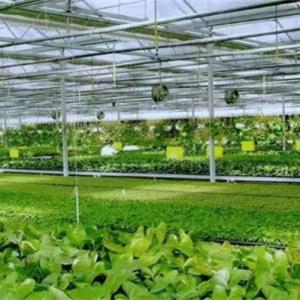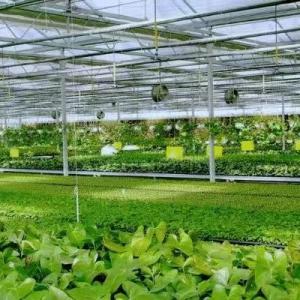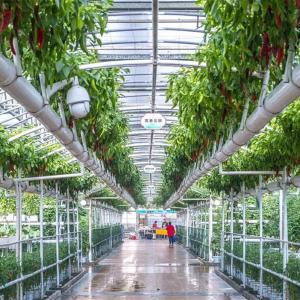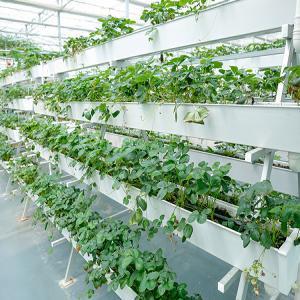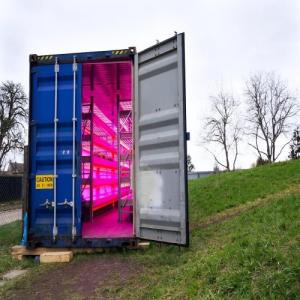Environmental Benefits of Commercial Greenhouses in the Middle East
Greenhouses utilize evaporative cooling systems to cool the environment inside. This has been an area of research in this industry with the forces driving ventilation, wind direction, GH dimensions and vent configurations all being investigated in published studies.
Innovative technologies allow for low-energy cooling systems and heat reducing energy generation to be integrated with greenhouse surfaces.
Water Conservation
Water scarcity is a pressing issue in the Middle East, making efficient water usage crucial for sustainable agriculture. Commercial greenhouses employ innovative irrigation techniques like drip irrigation and hydroponics, which significantly reduce water consumption compared to conventional farming methods. Drip irrigation delivers water directly to the plant roots, minimizing evaporation and water wastage. Hydroponics, a soilless cultivation method, uses nutrient-rich water solutions that can be recirculates, leading to even greater water efficiency. These practices ensure that every drop of water is utilized effectively helping conserve the region's limited freshwater resources.
Reduced Chemical Usage
Greenhouses provide a controlled environment that helps minimize pest infestations and diseases. This reduces the reliance on chemical pesticides and herbicides, leading to a lower environmental impact. Integrated pest management (IPM) practices, commonly employed in greenhouses, emphasize the use of natural predators and beneficial insects to control pests. By integrating biological controls and implementing monitoring systems, growers can maintain a balance between pests and their natural enemies, minimizing the need for chemical interventions. This approach promotes biodiversity and reduces the risks associated with excessive chemical usage, such as water and soil contamination.

Energy Efficiency
The Middle East experiences high temperatures and intense sunlight, making energy efficiency a crucial aspect of greenhouse operations. Commercial greenhouses in the region employ various technologies to regulate temperature and lighting while minimizing energy consumption. Energy-efficient ventilation systems help manage temperature and humidity, reducing the need for excessive heating or cooling. Insulated greenhouse structures prevent heat loss and optimize energy usage. Furthermore, the use of LED lighting systems provides efficient and targeted illumination for plant growth, consuming significantly less energy compared to traditional lighting sources. By adopting these energy-saving technologies, greenhouses can minimize their carbon footprint and reduce their dependence on fossil fuel-based energy sources.
Reduced Land and Habitat Degradation
Expanding agricultural activities can lead to deforestation and the destruction of natural habitats. Commercial greenhouses offer a solution by enabling year-round cultivation in areas with limited arable land. Through the implementation of vertical farming techniques and efficient space utilization, greenhouses can achieve higher crop yields per unit of land compared to traditional agriculture. This reduces the pressure to clear natural habitats for agricultural expansion, preserving biodiversity and protecting fragile ecosystems. Moreover, greenhouses can be established in urban areas or on unused industrial sites, repurposing underutilized spaces and preventing urban sprawl.
Reduced Food Miles
The Middle East heavily relies on food imports due to limited local agricultural production. By establishing commercial greenhouses in the region, the dependence on long-distance food transportation can be reduced. This reduction in food miles leads to a decrease in greenhouse gas emissions associated with transportation, contributing to climate change mitigation efforts. Additionally, localized greenhouse production enhances food security by reducing reliance on external sources and ensuring a more stable supply chain. Consumers also benefit from fresher and higher-quality produce, as greenhouse crops can be harvested and delivered quickly after reaching maturity.
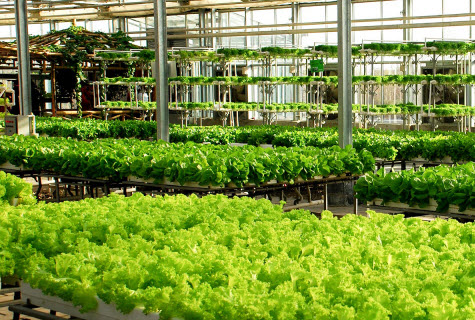
Conservation of Soil Quality
Traditional farming practices, such as excessive tilling and the use of heavy machinery, can lead to soil degradation, erosion, and loss of fertility. In commercial greenhouses, soil erosion is minimized as plants are grown in containers or soilless mediums like hydroponics. This protects the natural soil and prevents erosion, ensuring long-term soil health. Furthermore, greenhouses often incorporate organic matter into the soil and utilize cover crops, which enhance soil fertility and structure. These practices contribute to the conservation of soil quality, promoting sustainable agricultural practices that can be maintained over time.
Carbon Sequestration
Greenhouse cultivation methods, such as incorporating organic matter and cover cropping, contribute to carbon sequestration. When organic matter is added to the soil, it acts as a carbon sink, effectively storing carbon dioxide and reducing its presence in the atmosphere. Additionally, cover crops, which are grown between planting seasons to protect the soil, capture carbon through photosynthesis and contribute to organic matter accumulation. By adopting these practices, commercial greenhouses in the Middle East play a role in mitigating climate change by reducing greenhouse gas emissions and sequestering carbon from the atmosphere.
